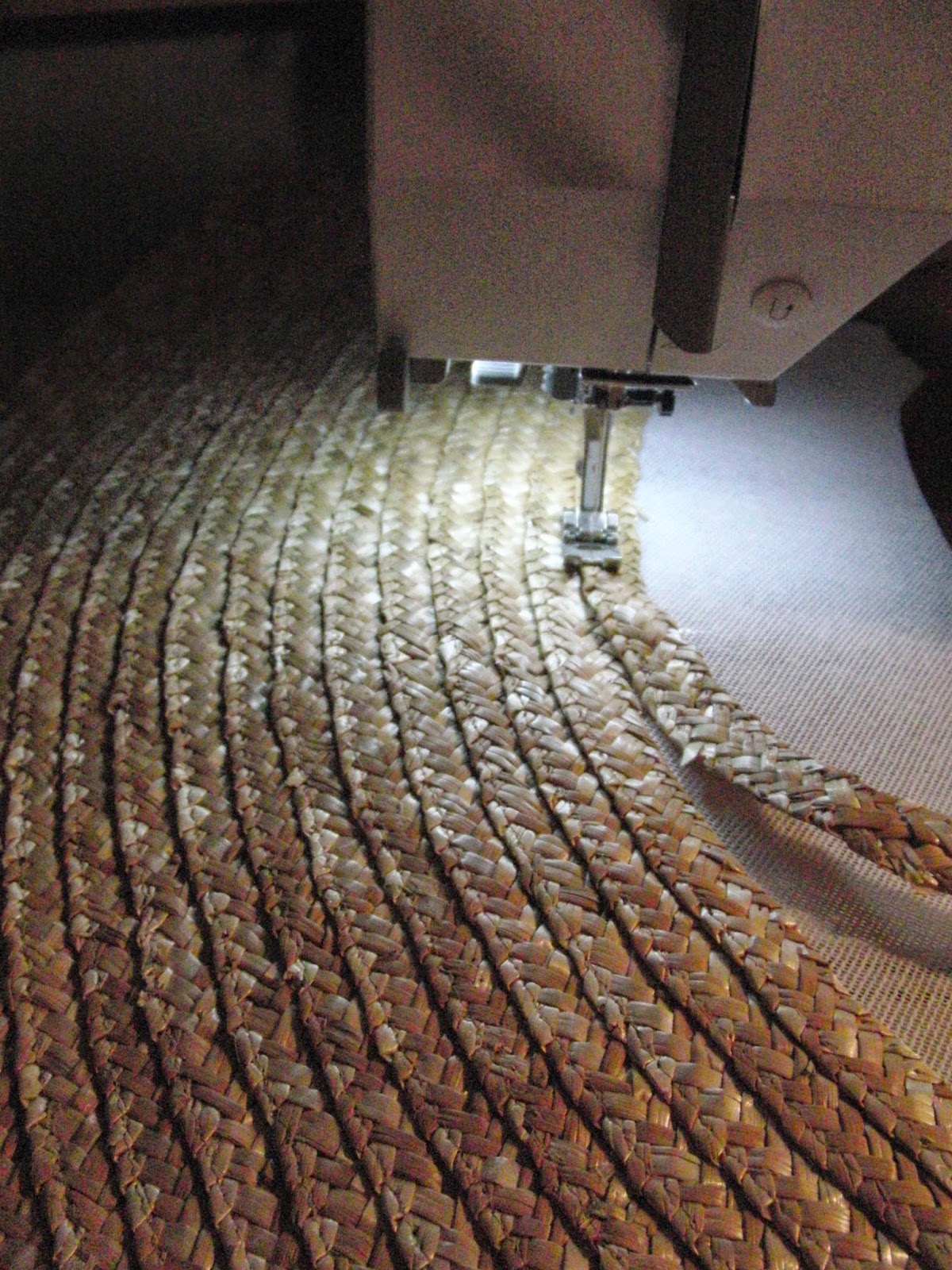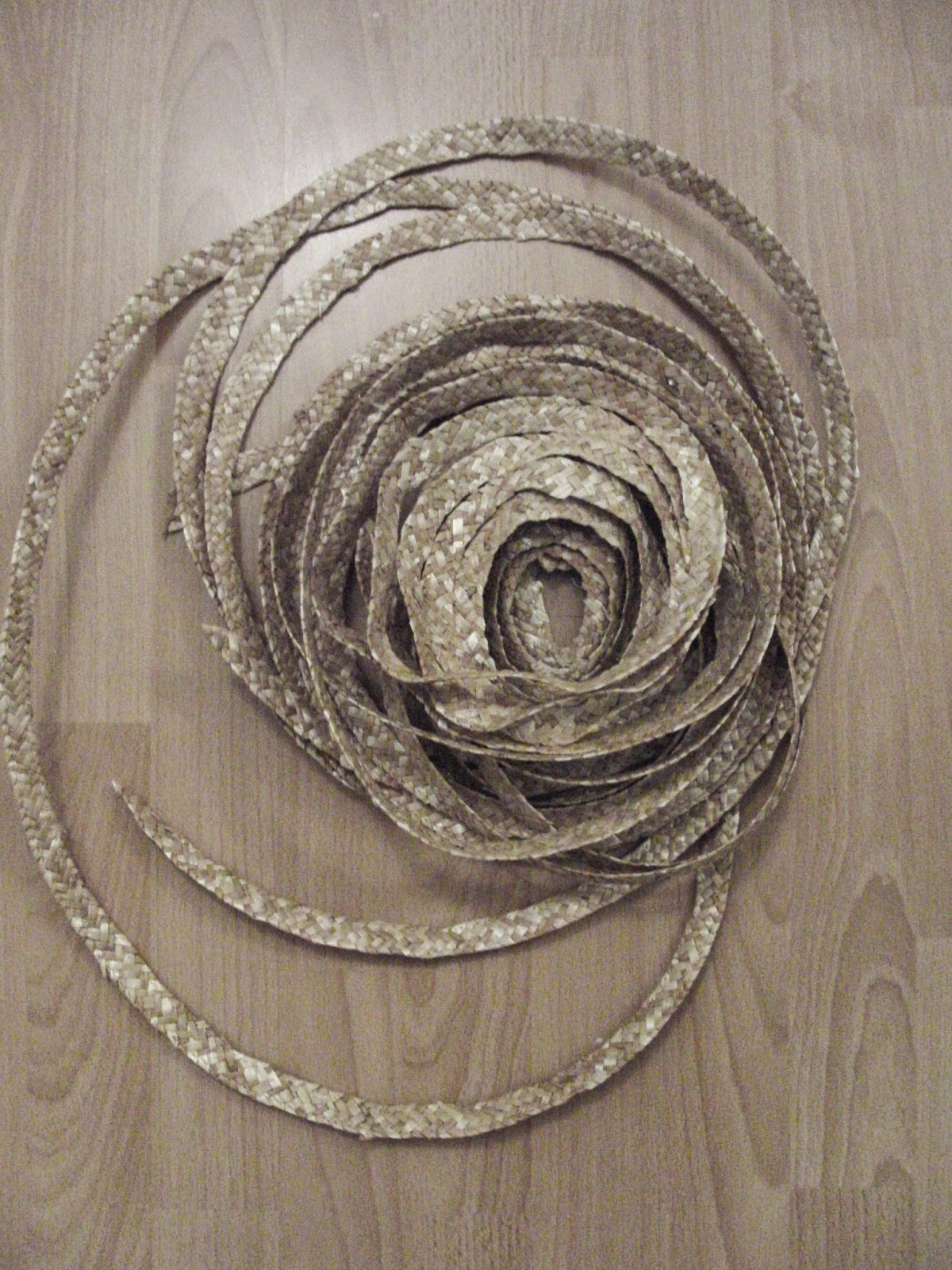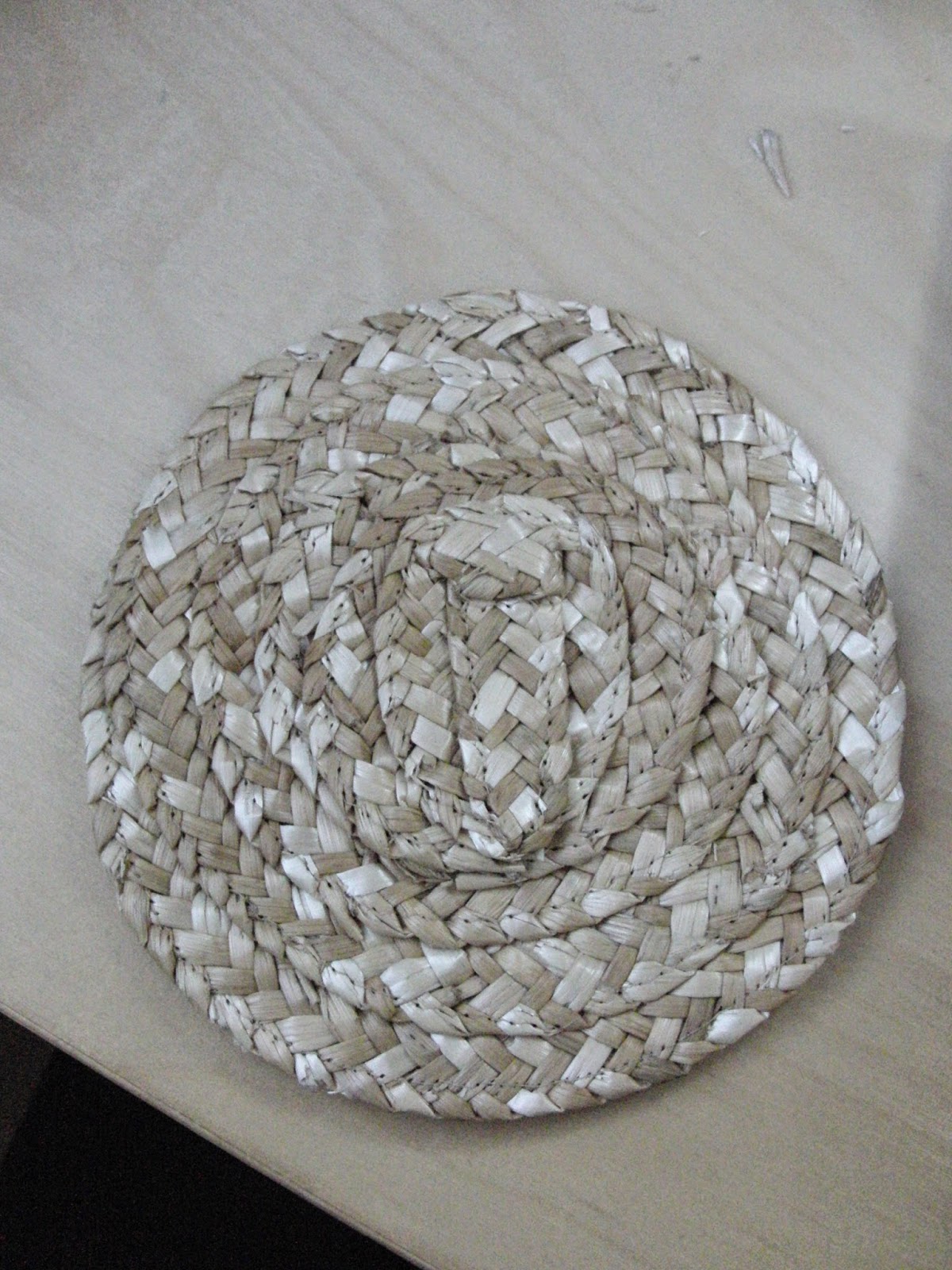Ever since I bought my hat patterns I wanted to try one in straw. But straw braid is expensive! So I bought four used straw Cowboy hats on ebay and opened up the seams of the first one. Since it was made using chain stitch that part was done in about one minute...
My first straw hat willactually be a straw bonnet. I chose a 1840s Bonnet Pattern from (guess it) Lynn McMasters.
Here is my process diary:
This is the original hat. But not for long....
First step, as usual, was cutting the bonnet pattern from buckram. To have a smooth edge, I covered the outer edge with a muslin bias tape.
Then I ripped apart the old hat to get a long braid of straw.
This braid is sewn on the buckram line by line. I am starting on the outside edge.
Since one hat wasn't enough I used some more straw from a second hat..



The crown is made from the original crown, but re-formed. I arranged the circle, drained it in hot water and pressed it overnight between towels and under a heavy tower of books.
This is the crown still a little damp.
After the straw dried, I stitched it to the crown tip from outside to inside.

And here are the finished all neatly trimmed pieces waiting to get assambled.

For the lining I am using my white cotton batist from my stash. I want the lining to be neatly pleated and covered by the first braid of straw on the outer edge.
I pinned the pleats and then turned the seam allowance up and under the straw. Then I glued the fabric to the straw.
Every pleat is fixed with thread in two places and glued again on the inside edge.

Then the crown is attached to the brim. I wanted the stitching to be invisible, so I used a brownish thread to match the colour of the straw. If one takes a very close look, one would see the stitches though.

Since I lined the brim before I attached the crown tip I had to be creatice with the lining. I covered a round piece of buckram and edged it with a self fabric ruche as my lining piece..



This is how far I got. Now I have to attach the bavolet and do some trimmings.
I really love the way it frames my face...




















































